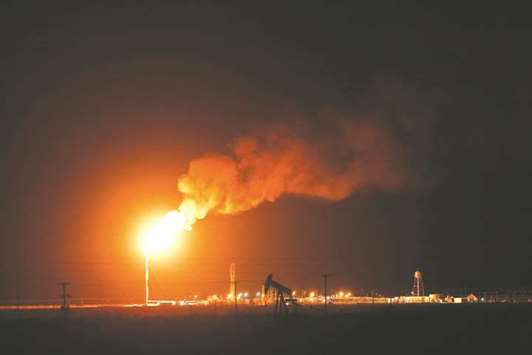In the two years since Washington lifted a 40-year ban on oil exports, tankers filled with US crude have landed in more than 30 countries, ranging from massive economies like China and India to tiny Togo.
The repeal has unleashed a flood of US shale oil, undercutting global crude prices, eroding the clout of the Organisation of Petroleum Exporting Countries (Opec) and seizing market share from many of its member countries.
In 2005, before the shale revolution, the US had net imports of 12.5mn bpd of crude and fuels — compared to just 4mn bpd today.
US producers are making new customers out of some of the world’s biggest oil-importing nations in Asia and Europe, posing a serious competitive threat to the only other countries that produce as much crude: Saudi Arabia and Russia.
At home, the export boom has filled pipelines and sparked a surge of investment in new shipping infrastructure on the Gulf Coast.
US producers now export between 1.5mn and 2mn barrels of crude a day, which could rise to about 4mn by 2022.
The nation’s output is expected to account for more than 80% of global supply growth in the next decade, according to Paris-based International Energy Agency.
Much of the increased flow will go to China, the world’s top importer and, since November, the largest buyer of US crude other than Canada.
Chen Bo, president of Unipec — China’s largest buyer of US crude — told Reuters that the firm expects to double US imports this year to 300,000 bpd as it seeks to expand sales in Asia and find new customers for US exports in other regions, including Europe.
Unipec — the trading arm of Asia’s largest refiner, state-owned Sinopec — is also considering long-term crude supply deals with US pipeline and terminal operators.
The firm may also partner with such firms to expand and improve US export infrastructure, Chen said in an interview.
“US crude flowing to Asia is a major trend in global oil trading,” Chen told Reuters.
Separately, China’s state-owned chemical and oil conglomerate Sinochem Group plans to open a trading office in Houston later this year to source US crude for China’s independent refineries, five sources familiar with the plans told Reuters.
Between 2010 and 2017, US oil production rose from 5.5mn bpd to 10 mn bpd — approaching a record set in 1970 — as shale fields in west Texas and North Dakota lured massive new drilling investments.
That brings national production in line with Saudi Arabia and close to top-producer Russia’s 10.9mn bpd.
Saudi Arabia cut output last year as part of Opec’s 2016 deal to reduce supply — after losing a price war with US shale producers that created a global glut.
Most forecasts show US crude output growing about 500,000 bpd to 600,000 bpd through the end of 2018, said David Fyfe, chief economist at global commodity trading firm Gunvor Group in Geneva, Switzerland.
The US Energy Department is even more optimistic, now expecting growth to rise by 1.2mn bpd — hitting 11mn bpd by year-end.
“The bulk of that growth will likely be exported,” Fyfe said.
US producers are also displacing foreign oil at home.
Total US crude imports have dropped to 7.6mn bpd from a peak of 10.6mn bpd in 2006.
Opec’s share has declined from more than half of US imports to about 37% as the US relies more on domestic production and neighbouring Canada.
Opec members Saudi Arabia, Nigeria and Angola have been among the hardest hit.
In the second half of 2017, US imports from Saudi Arabia averaged 709,000 bpd, lowest since 1987 and down from a peak of 1.73mn bpd in 2003.
US producers have also broken into the market in India — the world’s third-largest oil importer and home to the world’s largest refining complex, operated by Reliance Industries.

The silhouette of an oil pump jack is seen near a flare at night in the oil fields surrounding Midland, Texas (file). In the two years since Washington lifted a 40-year ban on oil exports, tankers filled with US crude have landed in more than 30 countries.


